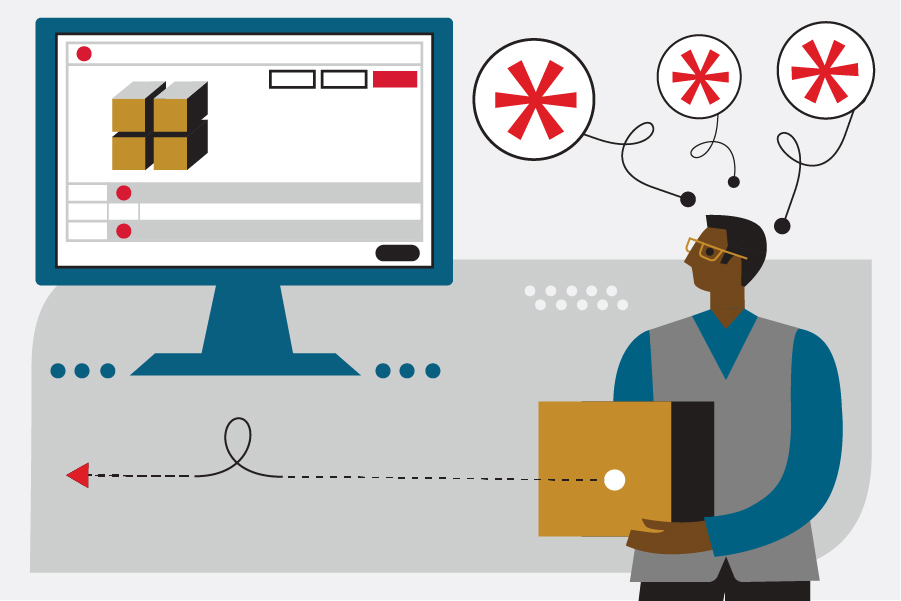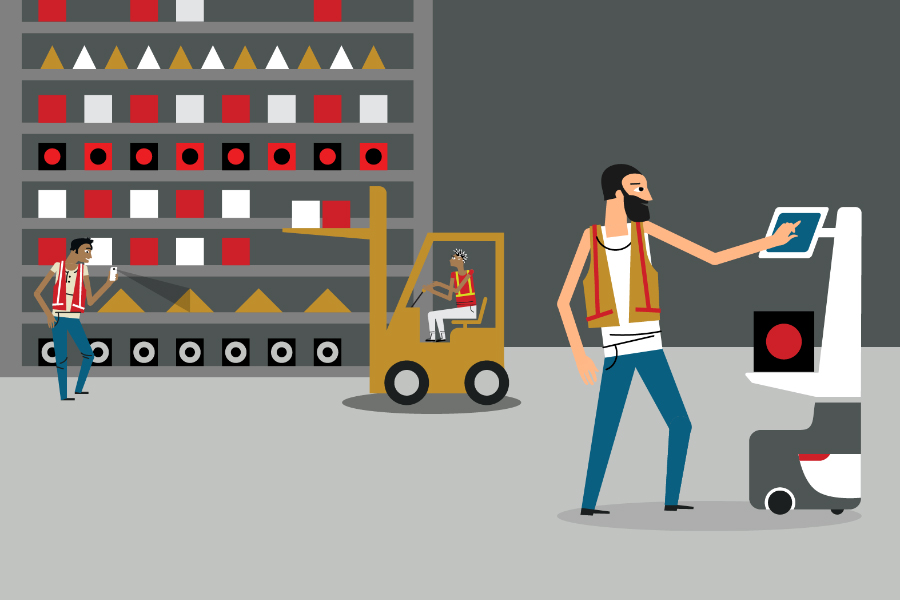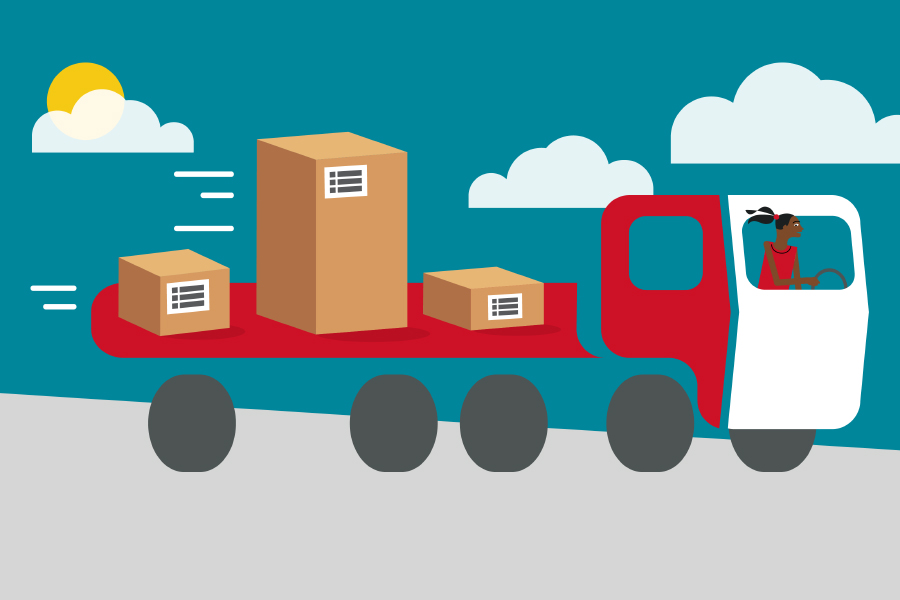Updated January 6, 2025
As an e-commerce retailer you’re fulfilling hundreds of orders a day, shipping out parcels across the world. You’re also dealing with returns up to the rate of 30%.
Having a solid returns process is just as important as your order fulfillment. In our 2024 E-commerce Consumer Study, we found 56% of consumers will not shop with a brand if its returns policies and processes are cumbersome. This shows there’s more to be gained by embracing returns culture than by pretending it doesn’t exist. So, how can you make the best out of a bad situation?
By utilizing returns management software, your business will gain far more than just a simplified returns process; you’ll also create a far more satisfying and hassle-free experience for your customers.
In this article, we’re going to explore how returns management software can streamline the returns process, and which tools will provide the best support for your business.
The inevitability of returns
Any article about e-commerce returns should start with this disclaimer; your business needs to accept that returns are a critical part of your business model.
But isn’t it counterintuitive to make returns easier, rather than harder?
It’s no secret that online retailers lose a lot of revenue from returns. According to the National Retail Federation, e-commerce accounted for $1.1 trillion in U.S. retail sales in 2024 – with $302 billion ultimately being returned.
But there’s also a lot of opportunity within these unfortunate outcomes.
If we think about the times, we’ve returned an online purchase (let’s face it; most of us have) there’s always a reason why. It might have been the wrong size or color, or that you simply changed your mind. This is without considering the customers who purchase items to return them. According to Narvar, 62% of consumers admit to bracketing their online purchases in the past year.
The truth is that returns culture in e-commerce is alive and thriving. Every return offers the potential to improve your shopping experience and create a favorable impression on your customers – but only if you have a stellar returns management strategy.
Why you should be using returns management software
The purpose of returns management software is simple. It streamlines the returns workflow by automating the manual processes that slow down returns, such as releasing RMAs or generating return shipping labels.
Returns software integrates directly with their e-commerce platform to give retailers real-time visibility over the end-to-end process. This makes it easy to configure a returns process that meets your specific needs as a retailer.
Let’s look at some other reasons why adding returns management software to your returns workflow is a massive advantage for your business:
Giving customers self-service options. If there’s one trend that e-commerce merchants should be paying attention to, it’s the increasing preference for self-service options. According to American Express, over 60% of U.S. consumers say that they prefer to use automated self-service options over contacting a customer care representative. By using a returns management tool, and you can empower your customers to take charge of their returns experience.
Converting returns into exchanges and additional purchases. Returns don’t have to mark the end of a sale. By using a returns management tool, your business can make effective recommendations for alternative products or facilitate easy exchanges for different colors/sizes – all within the same session.
Gathering valuable returns data. Knowing why your customers are making returns is the key to improving the shopping experience. Returns management software enables you to track analytics relating to your returns, from specific SKUs to the reasons cited. This helps you to increase customer satisfaction and reduce your return rates.
Getting items back on the virtual shelf faster. Time is money in the world of returns. If a product is returned, you want it to be processed as quickly as possible to avoid missing out on resale opportunities. Using a returns management tool enables you to speed up the approvals process and update your inventory levels faster.
Which returns management software is best for my business?
Ryder offers ready-made integrations with some of the top returns management tools in the marketplace. But when there are so many options available, how do you know which returns software is the best fit for your business?
The answer is this question depends on a lot of different factors, such as:
- Your product catalog
- Your selling channels
- Your e-commerce platform
- Common reasons that your customers make returns
- Whether you partner with a 3PL
We’re going to take a closer look at our favorite returns management tools and how they can help to streamline your returns process:
Happy Returns: Advanced omnichannel returns management
Happy Returns, a UPS company, pioneered box-free returns for shoppers and merchants in 2016. Today, they are a comprehensive returns solution, offering an expanded box-free drop-off network of nearly 10,000 locations, return-by-mail and online features such as one-click exchanges and options to incentivize revenue retention.
Something that makes Happy Returns stand out is their commitment to making returns easy and reducing waste during the returns process. Shoppers can complete a return in as little as 60 seconds and return items box-free and label-free at drop-off locations including Petco and Ulta Beauty. Items are aggregated and shipped in bulk to return hubs in reusable totes. Their smart routing system ensures that returned items are sent to their closest center, which creates significant cost and emission savings for your business.
Best suited to:
- Brands that want an automated and flexible returns solution
- Brands that have an e-commerce and brick-and-mortar presence
- Brands that use multiple fulfillment hubs
- Brands that want to drive sustainability by reducing cardboard waste and carbon emissions
Loop Returns: Customize the returns process
Loop is a leading post-purchase solution because it comes with the ability to completely customize how merchants offer returns and exchanges to their shoppers. With Workflows, Loop’s innovative automation tool, merchants can save on labor costs, streamline operations, and provide effective return and exchange incentives that help you build customer loyalty.
“At Loop, we strive to make merchants successful, “ says Nathan Lesperance, Loop Partner Manager. “That’s why we built the most customizable returns automation on the market—to help save you money and keep your customers coming back to shop with your store.”
Best suited for:
- Any merchant that wants to make their returns more cost-effective
- Brand that sells products with a lot of SKU variants
- Brands that suffer from continuously high return rates
ReturnGO: Self-service returns
ReturnGO takes the guesswork out of returns and transforms the post-purchase experience into a strategic advantage for eCommerce businesses. With real-time data insights and advanced automation capabilities, ReturnGO empowers stores to offer customers a self-service returns experience that builds loyalty, reduces waste, and increases sales.
The ReturnGO platform integrates seamlessly with a variety of leading systems, platforms, and providers, syncing every touchpoint from order tracking to refunds and exchanges to give you complete visibility and control over the post-purchase process.
"ReturnGO improves brands' operational efficiency across the post-purchase experience,” says Eyal Rosenthal, Co-Founder, CSO & GM ReturnGO US. “We're committed to giving merchants the flexibility they need to succeed - both through our technology and our integrations with leading 3PLs, ERPs, helpdesk software, and more."
Best suited for:
- Businesses of any size that want to automate their entire post-purchase flow.
- Stores that use multiple different platforms and systems and want to sync them all.
- Brands looking to maximize revenue and reduce waste.
- Merchants with complex return policies who want to automate the eligibility process.
AfterShip Returns: Seamless, loyalty-building returns experiences
AfterShip Returns delivers a hassle-free returns experience for your customers – while helping you reduce operational costs and recapture lost revenue at the same time.
With complete automation of your returns process, AfterShip Returns enables powerful rule-based workflows for routing and resolutions that eliminate manual tasks. Customers can expedite returns processing using an easy self-serve and branded returns page. Meanwhile, AI-based or curated product recommendations and bonus incentives encourage exchanges instead of refunds – meaning less revenue is lost.
AfterShip Returns works with 10+ platforms, including Shopify, Shopify Plus, Salesforce Commerce Cloud, BigCommerce, and more.
Best suited for:
- Brands that want to automate their returns workflow
- Brands that want to improve customer satisfaction with status updates and shorter lead times
- Brands looking for a robust all-in-one post-purchase solution
Top returns management tips for e-commerce
1. Understand which returns you can eliminate (and which you can’t)
It isn’t possible to eliminate all returns at your e-commerce business – and nor should you. If a customer has second thoughts or decides that a purchase doesn’t fit their needs, it’s within your interest to offer a flexible and straightforward returns process; 96% of consumers say they would shop with a retailer again based if they offered an “easy” returns experience!
Instead, you should focus on eliminating the returns that you CAN control. For example, if customers are bracketing their purchases due to difficulties with finding the right size, you should look at adding more comprehensive size guides to your website. Likewise, if poor-quality packaging is resulting in products being damaged in transit, this should be rectified to save your brand’s reputation.
2. Have a comprehensive returns policy
A generous e-commerce returns policy isn’t just desirable to most consumers – it’s an absolute must. Global Web Index found that almost 80% of U.S. consumers will check a retailer’s returns policy before purchasing, while 63% would refuse to buy from a retailer without a return policy on their website.
As a result of the COVID-19 pandemic, consumers have grown even more accustomed to no-questions-asked returns. With unprecedented numbers of consumers embracing online shopping, retailers have been forced to update their returns policies for greater flexibility. This means not only longer returns windows, but expanding omnichannel capabilities into in-store returns and return pick-ups.
If your store isn’t keeping up with these changes, consumers are likely to find someone else who will. For more on how to write an e-commerce returns policy, see our dedicated post.
3. Pre-empt your customer’s desire to return
The key to offering a stress-free returns process is to be proactive rather than reactive. When you send out order confirmations, consider including return instructions and a link to your returns portal in the body of the email. This way, if a customer does decide to make a return, they can initiate the process straight away without needing to contact your support team first. This means a more satisfying returns experience and a higher likelihood of repeat purchases.
Merchants using the RyderShip™ platform can generate fully branded return authorization links to share with customers automatically when they place an order, which takes considerable pressure off your customer care team.
4. Use return-ready packaging (includes pre-paid labels)
Spoiler: Customers don’t enjoy returns any more than retailers do. The process of initiating a return can be stressful and time-consuming, not least because most brands don’t use packaging materials that can be reused for return transit.
If customers are having to pay for return packaging because of poor design considerations, this creates a point of friction in the returns experience. It’s a major inconvenience to have to run out and make a special trip to USPS and may be interpreted as you trying to pass return costs onto your customer.
By using return-ready e-commerce packaging, you can avoid giving your customer a negative returns experience. Moreover, this also saves your business money by using packaging which can be used for multiple home deliveries.
5. Partner with a 3PL
The term ‘reverse logistics’ exists for a reason. For successful returns management, the end-to-end process needs to be just as coordinated as your outbound orders. If your returns process is slow or fraught with inefficiencies, this can lead to all sorts of problems: Missed resale opportunities, returned merchandise piling up in warehouses, slow refunds – and unhappy customers who won’t be coming back.
By partnering with a fulfillment provider experienced in reverse logistics, you can take an entire workflow off your shoulders and put it in the hands of someone with the infrastructure and partnerships to coordinate a streamlined, cost-effective returns process that enhances customer loyalty.
Discover seamless returns management with Ryder
If you’re an e-commerce merchant looking for efficient and cost-effective reverse logistics, you don’t need to look any further than Ryder. In addition to providing advanced proprietary software for a worry-free returns process, Ryder’s nationwide e-commerce fulfillment network ensures that returned merchandise gets back on the shelf as quickly as possible to maximize your revenue.
Integrations with returns management tools. Our native integrations with Happy Returns, Loop Returns, and ReturnGo in addition to all major e-commerce platforms enable your business to build a streamlined returns system with end-to-end visibility.
Leverage carrier partnerships for affordable return shipping. Our partnerships with both national and regional carriers allow us to get our customers the very best outbound and return shipping rates, helping you to strengthen your profit margins while meeting customer expectations.
Regional fulfillment nodes. Our smart multi-node fulfillment network sends returned stock to the processing location that offers the fastest turnaround to resale, meaning that your business won’t miss out on valuable sales opportunities.




